Using giveaways for marketing is a tried and tested idea both on and offline. Raffles, lotteries, and giveaways are as old as the Bible. But in the age of social media, giveaways have become the next supposed silver bullet for marketing. Entire companies such as Rafflecopter, Gleam.io, and KingSumo have started to help companies make the most of their giveaways. Even Amazon is in on the game.
The formula for running a giveaway online is pretty straightforward. You pay a certain amount for a prize. Offer a chance to win it for free by entering their email. Incentivize people to get more entries by sharing it. The extra sharing creates a viral factor that gets you more email addresses and entrants than you would have with pay per click ads or more 1 to 1 organic promotion.
You then award the prize, and start email marketing to all your new subscribers. If the cost of the prize is less than you would have spent acquiring them via pay per click or other channels, then it’s a marketing success!
There are plenty of examples of giveaways that appear successful. They’ve become nearly ubiquitous with Amazon even integrating them into shopping pages. They happen daily in every industry – everything from copywriting to industrial tools. Giveaways seem like marketing best practice.
But are giveaways worth it? What does it take to run one? And what’s the best way to use giveaways for marketing? That’s what this guide is for – let’s dive in.
How To Run A Giveaway
1. Understand the upside and downsides
Just like any marketing initiative, not all giveaways succeed. The Internet is a crowded space with tons of free stuff. It is possible to spend a ton of money on a giveaway…and not make a dime or get a single subscriber.
Attention still trumps free product.
Also not every industry or website can have (or wants) massive sharing. A subscription to a niche industry tool will not drive hundreds of thousands of tweets. And a product with mass interest like a free iPad will neither stand out nor will get in front of the right audience.
You can use spy tools to set expectations. Tools like Semrush or Ahrefs let you explore share metrics from competitors or other industries. Before you start planning, go and check previous giveaways to set expectations.
2. Understand the basics & set goals
Define your goals and specifically note how the giveaway fits in. This is a key first step because giveaways are fun. They can easily be judged a “success” when they weren’t based on business goals. Anyone giving away free stuff is going to be popular. You’re going to make someone’s day, and that is always fun and happy. It’s 100% fine that’s your only goal, but be sure to spell that out. If your goal is to get email subscribers or drive sales, then you should spell that out beforehand. Do you want email addresses? If so, what quality? Shares? Sales? If you want awareness, how will you measure it?
3. Choose an Audience & Product
You also have to decide what audience you’re going after & what product you’ll use to attract them. For example, if you are a plumbing product business, do you want DIY homeowners or contractors? What do you want them to do? What’s the end goal? The product will mostly determine not only the size of your audience but also the type of audience you’ll get in front of.
If you gave away an iPad or an Apple Watch, you’d have a nearly unlimited audience. But, you’d also have a near-impossible task getting attention. Since it’s neither directly related to you or your audience, the subtext is “strings attached.” There’s no reason for anyone to pay attention.
You can use the product to go after audiences that are complementary to yours or connect deeper with your own audience. The product, though, will determine what you can do.
For example, if you give away a subscription to Ahrefs (an advanced SEO tool), you’d get a specific type of audience – advanced SEO specialists. You’d also limit your total potential audience.
If you gave away a SEMrush (an SEO + PPC + Social tool) subscription or a web hosting account, you’d get a broader audience – general webmaster and marketing people. You’d have a bigger potential audience size, but you’d have a bigger challenge letting them know about the giveaway.
In general – the bigger the potential audience, the bigger the prize needs to be. The more targeted the audience is, the more targeted (and coveted) the prize needs to be.
It also needs to be something that people prize, but also not an essential work tool or day to day necessity. In other words, the prize should be something people really want, but never have a solid reason to buy. Collectibles or brand name type products would be a good fit.
4. Define & Map a Promotion Plan
As with any content, you have to have some form of promotion plan. How will people hear about the giveaway? How will you generate interest? How will you generate trust (most people know there’s always a catch)?
If you have an existing audience, you can definitely start with them. But to expand to the audience you don’t currently have, you have look at other channels. Paid Social (like OutBrain, Pinterest, or SnapChat) can be a good fit since that’s where most sharing will take place anyway. Look for ways to target specific audiences that might be interested in the giveaway. Do direct outreach to websites that complement yours. See if their readers would be interested in your giveaway.
Note how the double announcement makes it even more relevant for the media site.
5. Set up your infrastructure
Next, you need some sort of software to collect entries, run the contest, and choose a winner – in addition to providing a seamless and optimized experience for users.
Technically, you could build this yourself. But there are plenty of plug-and-play solutions out on the market. Rafflecopter is the most well-known. Gleam.io has an interesting product. Amazon has a seamless setup to giveaway its products. I ended up choosing KingSumo for my giveaways. I love the creators’ other products, and it’s super-easy to install and run. It has plenty of solid functionality, like adding entries based on shares, referrals, etc in addition to solid technical capabilities.
Whatever product you end up choosing, the setup is fairly straightforward. Here’s the KingSumo set up process.
5a. Buy and download the plugin here
5b. Install & activate the plugin, just like any WordPress plugin
5c. Configure your settings & Write the copy (located in WordPress sidebar –> Settings –> KingSumo)
5d. Link to an email capture platform (such as MailChimp)
5e. Implement Analytics
Grab the UA code from the Admin section when logged into Google Analytics.
5f. Polish the design
Find the right images, and plug it into your Giveaway.
5g. Preview & publish
Configure settings for all giveaways under Settings. Use the KingSumo link in the Dashboard to manage individual giveaways.
6. Run it!
Once you’ve published your page, you go into your promotion plan. After the contest ends, KingSumo (or your product of choice) will automatically select the winner. You give final approval based on pre-announced rules and whether they confirmed their email address or not.
Notify the winners, deliver their prize and send out a winner announcement.
You can run the URL through a sharing tool such as LikeExplorer.com to get final share metrics. And of course, you can check your analytics to see total sessions and your email platform to see number of email addresses submitted.
My Giveaway Experience
That’s how to run a giveaway…but what’s it like behind the scenes?
Several years ago, I ran a giveaway for this website in conjunction with the 100th edition of my newsletter. I had 3 goals.
First, I wanted to see how giveaways compared to other paid channels. I’ve advertised in other niche channels, but they had little direct response success. For most channels, I’d pay more than my target of $1 per subscriber for someone to click over and sign up.
Second, I wanted quality newsletter subscribers (aka newsletter subscribers who opened more than 50% of my editions). I knew this would not happen by simply transferring giveaway entries over to my list without a direct opt-in to the newsletter. I know that’s what other giveaways do, but I wanted to have a clean opt-in pitch. I did a newsletter signup pitch at the winner announcement for everyone who opted-in to the giveaway.
Third, I wanted to increase brand awareness. Yes, that’s an intangible term. I’m generally not a fan of “awareness.” But there are some ways to (kind of) measure it. I would call it a success if Twitter engagement doubled against my already increasing baseline.
My product was a set of Seth Godin books. I didn’t choose it randomly. I wanted to get in front of people who appreciated a certain type of marketing – one that Seth Godin talks about. I also want people who are actively learning.
I wanted a product that people would love to have, but also never actually buy. I also wanted a product that had already generated a bit of success already. A set of Seth Godin books ticked every box. In fact, Noah Kagan of Okdork.com ran the exact same giveaway the previous year with good success.
I didn’t have a ton of time to devote to manual outreach at the time, so my promotion plan leaned heavily on paid.
I promoted to my existing newsletter audience, of course. Additionally, I spent ~$100 on Facebook, Twitter, and StumbleUpon respectively. The total budget for the giveaway was $400.
Twitter Ads has a really cool feature called Tailored Audiences. You can upload a list of emails or Twitter handles (require minimum 100 users) and let Twitter will analyze them. Twitter will then create a “Lookalike audience” for your campaign. The audience will consist of people very similar to the audience you uploaded. Almost like Netflix Recommended For You for ads.
I scraped 100 Twitter handles of the people who had originally shared Noah Kagan’s Seth Godin promotion last year (yes, that is right on the line of Twitter’s Tailored Audience Terms of Service – use the tactic at your own risk).
Uploaded that to Twitter to create a lookalike audience. Twitter runs its algorithm against the similarities among the people in that group, then creates a Tailored Audience of new people who match that profile. Approve and set a budget.
Twitter drove 34 total (organic + paid) entries with $131 in spend.
I used interest and demographic targeting around people who were fans of Seth Godin, Noah Kagan and AppSumo.
In hindsight, I should have also taken advantage of Facebook’s Custom Audience feature. I set a budget, made ad variations and launched that campaign.
Facebook drove 67 total (organic + paid) entries with $117 in ad spend.
StumbleUpon
Based on my previous experiments with StumbleUpon, I thought a giveaway might be a good fit. I’d also get a lot more traffic for $155 to really get a solid data set.
**Note – StumbleUpon no longer exists. In hindsight, I would have shifted this budget to Google Ads & Pinterest.
I created a campaign around the Entrepreneurship / Marketing interest bundle and let it launch.
StumbleUpon drove 9 total entries with a $100 spend.
Results
For my total spend of $503, I got 239 email entries and 179 confirmed contestants. When I pitched them on joining my newsletter, I got… 1 new subscriber.
So my total cost per email was $2.10 and total cost per quality subscriber was $503.
Pretty much a straight-up failure….based on my very tight objectives and quirky definition of “re-pitching” giveaway contestants.
The side benefits were plenty though.
You really can make someone’s day. There is something to the idea of building a brand and building “1000 True Fans“. You can’t make data-driven business decisions around it (ie, whether or not to run more giveaways). But it is an intangible that should come as a side effect from marketing campaigns.
I was able to connect with some of my favorite marketing authors on social & email because of the giveaway.
I also really connected with my readers. Lots of very kind emails, lots of great feedback and lots of fun interactions that would not have otherwise taken place.
Ideas for Better Giveaways
The traditional marketing funnel places giveaways in the “Awareness” category. It’s a cheap way to capture email addresses and “move people through your funnel.” I’m not sure it works that way every time. Simply because people want the free thing doesn’t mean they want your product/service.
Sure, they are “aware” of your product/service. But it’s more like a “I know you exist” type of awareness – not an “I might be interested in your type of products and services and now know you exist” type awareness. In other words, the emails you get are not going to be quality leads at all or even quality email opt-ins.
From running my own giveaway and observing others across industries, there are a few ideas that could improve how giveaways are used for marketing.
Connect with Current Audience
Instead of trying to generate consideration/awareness among new audiences, make connecting with your current audience a primary goal. It’s sort of a “reverse-funnel” but it works. Build karma with your current audience for the sake of building karma. Ben Chestnut of MailChimp describes this approach really well here.
Relationship Awareness
Buying and promoting someone else’s product is an amazing way to start up a business relationship. If you choose your product and your promotional product around an up-and-coming creator and/or business, you open up a lot of complimentary promotion opportunities.
In other words, you are promoting a product in the giveaway. Choose a product to promote that is made by someone who will also love to promote your giveaway.
Social Viralness
There are some times when generating social viralness for social viralness’ sake is a worthwhile. You just have to make sure the timing is right, and that you have a full promotion plan.
For example, if you are building up to a product launch, there’s “wow, this brand is everywhere all the sudden” effect. You’ve probably subconsciously noticed it when a favorite author is coming out with a new book.
All of a sudden, you’ll start to notice all kinds of social chatter; guest posts on your favorite blogs; interviews on your favorite podcasts, etc, etc. Giveaways are usually part of that formula.
It’s not a stand-alone tactic – instead, it’s yet another channel that works in tandem with other channels to create the “this brand is everywhere” effect. You have to have a strong sense of your target audience, and a built-out launch plan, but giveaways can be a strong component of that plan.
EZ Dent of Athens, GA (they do car body stuff like hail repair, etc) ran a Yeti cooler contest limited to their local area. They focused on increasing organic reach among existing subscribers on Instagram and Facebook – and encouraging them to spread it to their followers/friends. For a local area, they got a lot of traction.
For further reading, AdEspresso did an in-depth piece on Facebook Contests.
Retargeting Audience
Create a new data pool from the visitors landing on your giveaway page. Even if the giveaway entries aren’t interested in your current opt-in offer, there’s no reason you can’t go back and reach them with a new offer in the future. A retargeting audience allows you to do that.
Plus, you can always use the retargeting audience to create new lookalike audiences in Google. And use the email submits for lookalike audiences in Facebook and Twitter. These are often more hyper-targeted than interest or contextual targeting could ever be.
Email Captures*
This idea is simple – and basically the traditional online giveaway goal but with a caveat. Capture the emails and subscribe them to your newsletter/autoresponder/blog update list. However, spell that out clearly in the giveaway. Once the giveaway is over, scrub unsubscribes and non-responders from the final metrics.
The idea here is that people are lazy and often ambivalent. They might be mildly interested in your email marketing even if they are primarily interested in the free stuff. It’s also more effective to get people to opt-out than opt-in. Go ahead and clearly disclose what people are signing up for. Let them opt-out if they really don’t want your marketing landing in their inbox.
The final takeaway is that giveaways can be an effective marketing tactic, but they certainly are not a magic bullet. They are best used as a complement to other channels or as a way to connect to your current audience.
Next Steps
Decide if a giveaway fits into your current strategy and budget. If it does, set specific goals for the giveaway. Then spend the majority of your time on the product choice and promotion plan.
Use a plug and play giveaway software like KingSumo, Gleam.io or Rafflecopter.
Lastly, measure the results based on your set goals, and have an after-giveaway plan (retargeting, etc) to make the most of it.



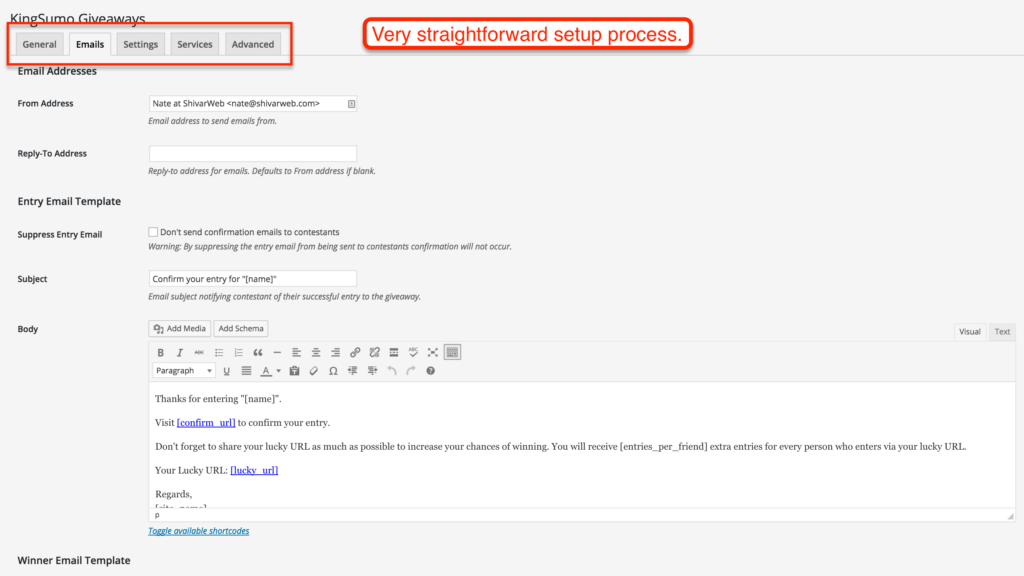
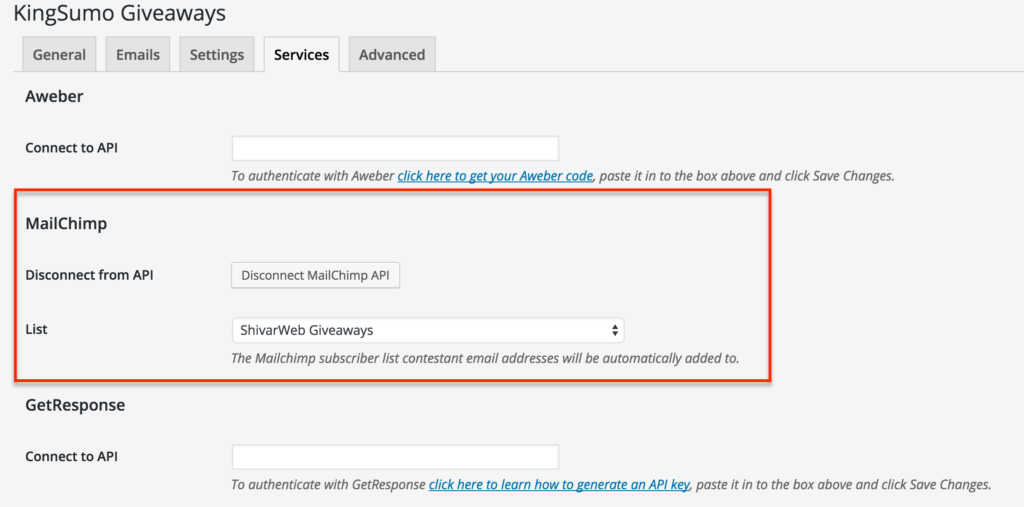
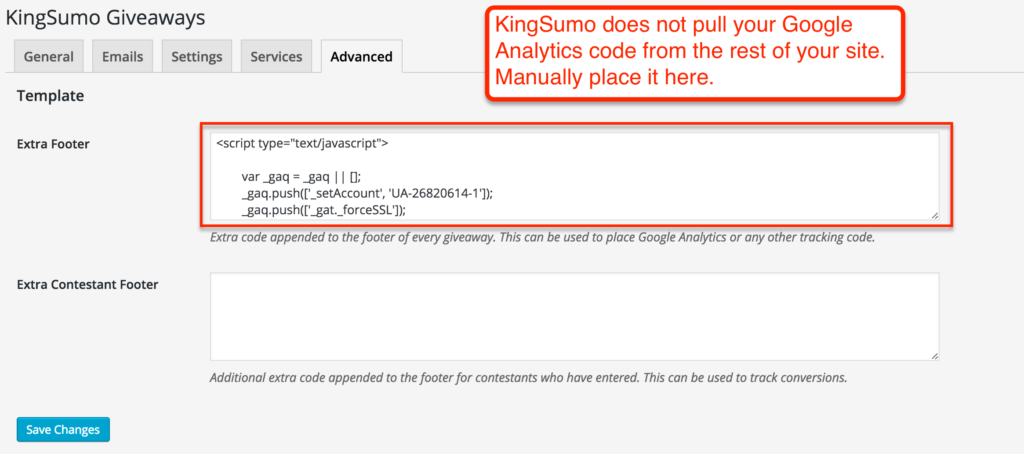
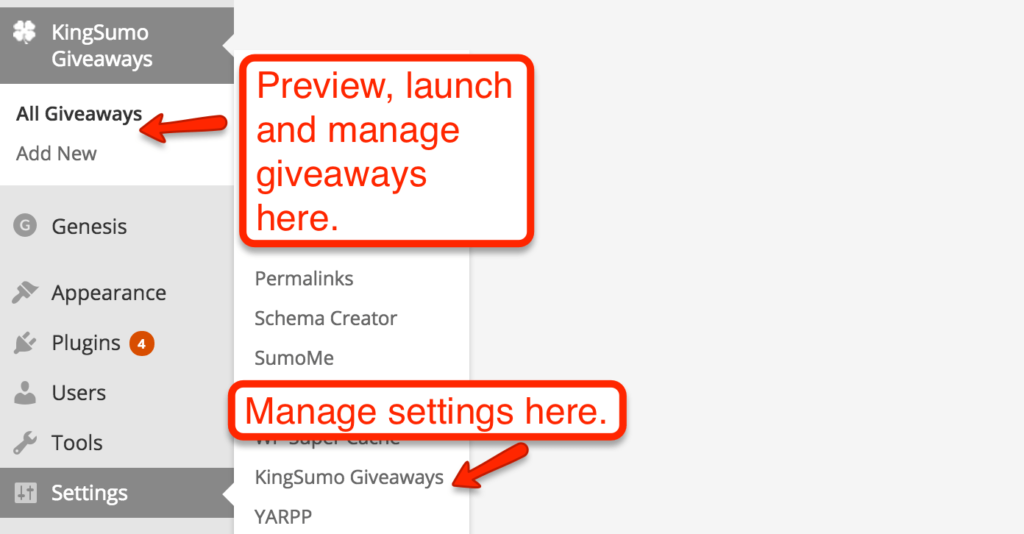

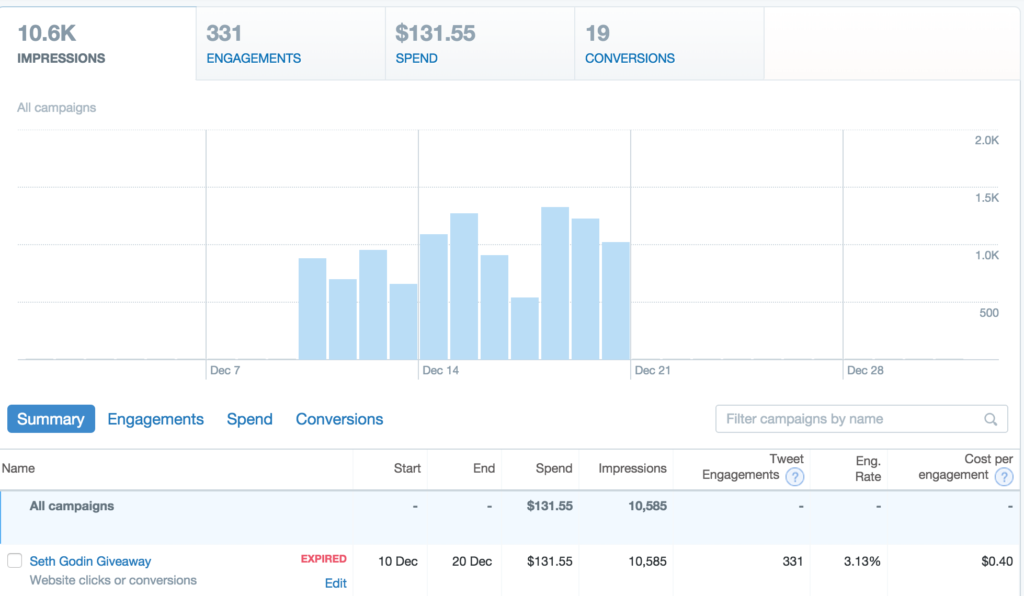






For as long as I’ve been online, Ive never ran a giveaway promo before (that was sponsored by me and not by somebody else)
I have to try this soon, just to learn and acquire experience like you have had with your campaign.
Thanks for sharing Larry!